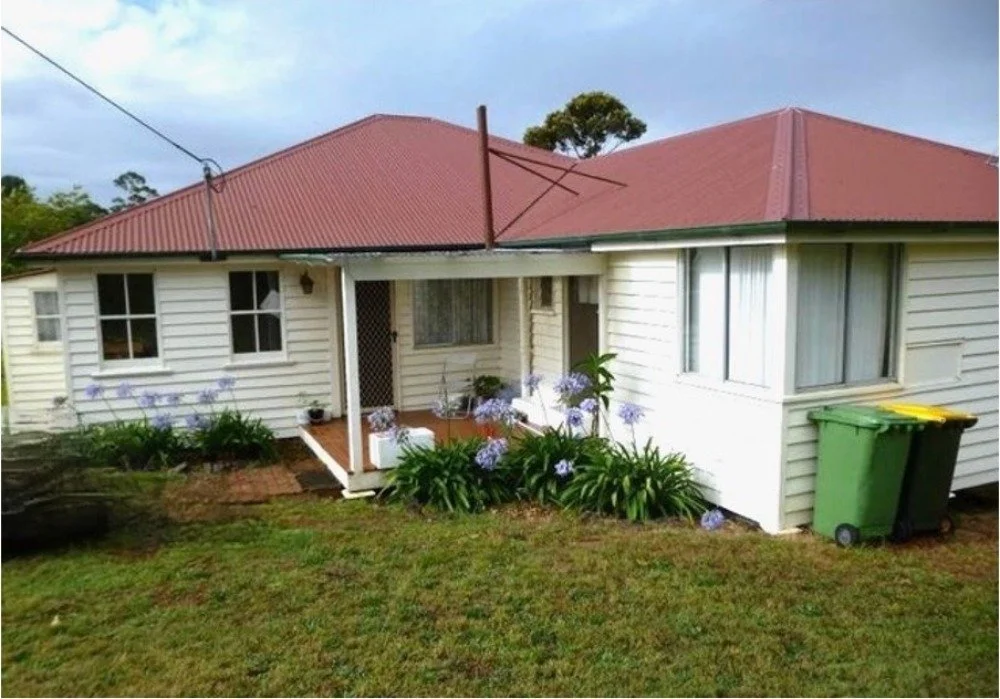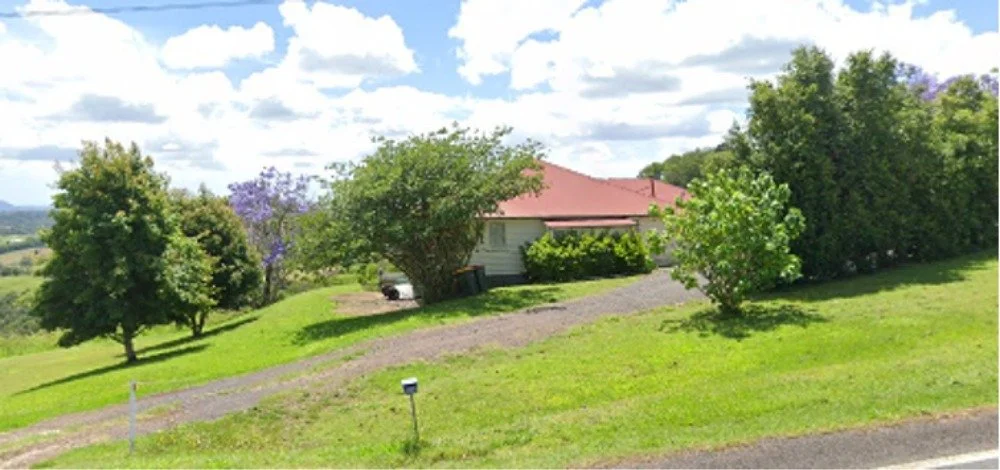One home, two families: The story of 365 Flaxton Drive
This old house hugs the eastern side of the Blackall Range. The front of the house sits at ground level. The backyard view over the escarpment to Mt Coolum and the Pacific.
This Old House: telling the stories of landmark homes of the Blackall Range. This week G Plowman of the Montville History Group visits 365 Flaxton Drive.
This old house at 365 Flaxton Drive, Flaxton has no name, but it was once home to two of Flaxton’s best known families who devoted their time and effort to benefit the community. It was known firstly as Hetherington’s place and later as Copeland’s place.
This lowset home sits comfortably close to the eastern edge of the Blackall Range. High ceilings promote coolness and give a feeling of spaciousness. Sash windows let summer breezes flow through to cool the interior. On the east, the windows frame the matchless views over coastal farms and far beyond to sandy beaches where ocean waves crash white against the shore.
When Anzac and WWI veteran Alfred D’Arcy Carruthers Hetherington, usually known as D’Arcy, returned to Australia in 1918 he purchased his citrus orchard at Flaxton and in 1922 married Christina Morris. D’Arcy had worked with the Flaxton community to establish the Flaxton Provisional School which opened in the same year. Later, the three Hetherington daughters, Margaret, Isobel and Elizabeth made the short walk up and over the hill to school.
D’Arcy Hetherington’s father, Robert Blain Hetherington, retired as Police Magistrate at Warwick in 1924 and purchased an orchard in Flaxton plus his retirement home in Maroochydore. D’Arcy’s younger brother, Frank, owned the farm directly opposite and for a time in the early 1930s, all three Hetherington families were farming at Flaxton.
When the citrus industry on the Blackall Range was decimated by disease most farmers turned their hands to dairying and pineapple growing to earn their living. The Hetherington orchard was hit hard and after nearly 20 years in residence, the family sold their house and farm and went to live and work in Brisbane.
The new owners, Roy and Marjory Copeland moved in and began growing pineapples in the land to the south of the house. They brought up their sons, Brian, Ken, Ian and Geoffrey here and all four attended the Flaxton School before all going on to higher education.
Mr and Mrs Copeland were great supporters of the Flaxton School and the local community. Roy, also a veteran of WWI, spent some years of the Second World War working at the Flaxton sawmill which was considered by the Manpower organisation as an essential industry. Marjory was an active supporter of the Flaxton CWA and Montville St. Mary’s church.
The farmhouse has no near neighbours and for over one hundred years it has looked to the east and watched on as the early morning sun paints the sky in red and the ocean waves in glittering silver.
Externally, the house has changed little over the years, but progress has forced some changes. All rural houses once depended on rainwater collected from the roof and stored in tanks to supply their drinking, bathing and clothes washing needs.
The once familiar sight of corrugated iron tanks sitting on elevated tank-stands are now a rare sight. The installation of sewerage or septic systems has seen the demise of the tiny outside building which once housed the lavatory. With the coming of electricity, the old stove recess, wood burning stove and chimney have long gone.
With the passing of Roy and Marjory, one of their sons took over the family home and Copeland ownership continued for over forty years.
More recently the home has been rented as a 4-bedroom cottage on two levels with a study, bathroom and ensuite. The house front sits at ground level but is stumped at the back and partly closed in underneath with cement blocks. This century old home remains a reassuring link with the past and forms part of the fond memories of the many Flaxton children who adventured here with the Hetherington and Copeland children.






